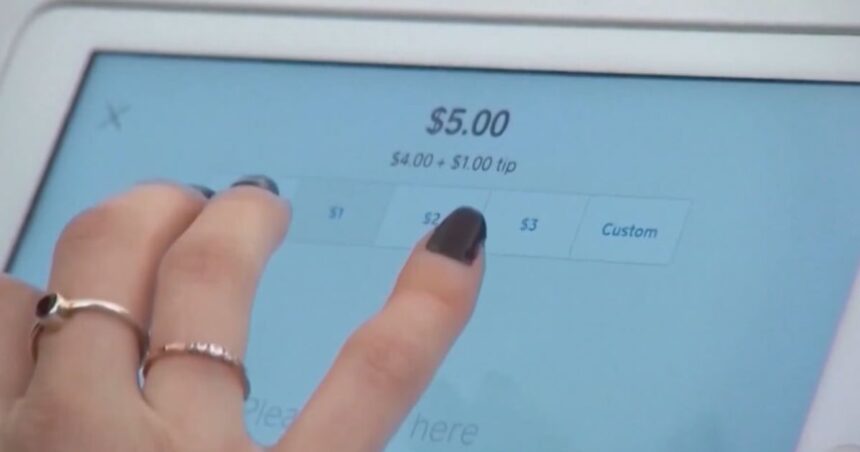In the quiet aisles of a Toronto convenience store, Maria Chen found herself facing an increasingly common Canadian dilemma. After selecting a single bottle of water, she approached the counter only to be confronted with a payment terminal prompting her to add a 15%, 20%, or 25% tip. No service had been provided beyond the basic retail transaction, yet the expectation of gratuity loomed large on the digital screen.
“It caught me completely off guard,” Chen told CO24 News. “I felt pressured to select something, with the cashier watching my every move. I ended up tipping 15% just to avoid the awkwardness, but walked away feeling manipulated.”
Chen’s experience mirrors a growing frustration across Canada as digital payment systems have transformed the traditional boundaries of tipping culture. What was once reserved primarily for restaurants and personal services has expanded into retail stores, coffee shops, food trucks, and even self-service establishments.
Recent data from Payments Canada reveals a 27% increase in prompted tipping scenarios since 2022, with the average suggested tip percentage rising from 15% to 22% across various sectors. This shift comes as businesses adopt sophisticated point-of-sale systems that make adding tip options virtually effortless for merchants.
“We’re witnessing the algorithmic manipulation of social pressure,” explains Dr. Samantha Reid, consumer behavior researcher at the University of Toronto. “These digital prompts create a public moment of judgment where declining to tip feels like a moral failing, even when the service doesn’t traditionally warrant gratuity.”
For business owners like James Wilson, who runs a small bakery in Vancouver, the decision to add tipping prompts came from employee requests rather than management strategy.
“My staff were watching baristas at the coffee shop next door collect substantial tips through their payment system,” Wilson explains. “They asked if we could implement something similar. It’s created a significant boost to their hourly earnings, but I’ve definitely noticed some customers expressing discomfort.”
The economic implications extend beyond mere social awkwardness. Financial advisor Michael Roberts notes that the proliferation of tipping prompts adds considerable pressure to household budgets already stretched thin by inflation.
“When Canadians are facing 4-5% tip requests at multiple touchpoints throughout their day, we’re talking about a substantial impact on discretionary spending,” Roberts told CO24. “It’s an unregulated, unofficial price increase that many consumers haven’t fully calculated into their budgets.”
The phenomenon has created particular strain for visitors to Canada, who often find themselves navigating unfamiliar tipping expectations. Tourism industry surveys indicate 63% of international visitors report confusion about when tipping is genuinely expected versus when it’s merely suggested by payment terminals.
Social media has become the primary battlefield where Canadians express their frustration. The hashtag #TipFatigue has garnered over 15,000 posts on various platforms in recent months, with users sharing their most egregious examples of unexpected tipping prompts.
“I was asked to tip at a self-checkout kiosk,” wrote one user. “Who exactly am I tipping? The machine that replaced the cashier?”
Consumer advocates are now calling for greater transparency around tipping prompts. The Consumer Council of Canada has proposed guidelines that would require businesses to clearly disclose whether tips go directly to service staff or are retained partially by management.
“Consumers deserve to know where their discretionary tips are going,” says consumer rights attorney Patricia Nguyen. “Many would be surprised to learn that in some establishments, the digital tips they provide are subject to administrative fees or distribution systems that dilute the amount reaching frontline workers.”
Despite the backlash, some Canadians defend the expansion of tipping culture as necessary support for service workers facing stagnant wages and rising living costs.
“I see tipping as a way to directly support individuals in the service industry,” says Montreal resident David Tremblay. “If an extra dollar or two helps someone make ends meet in this economy, I’m happy to contribute.”
As digital payment systems continue to evolve, the boundary between appropriate and excessive tipping prompts remains blurry. For now, Canadians find themselves navigating a complex social and economic landscape where the simple act of making a purchase increasingly involves ethical calculations about fair compensation and social expectations.
As we witness this transformation of Canadian consumer culture, one question remains: Are we approaching a tipping point where consumers will finally push back against the relentless expansion of gratuity expectations, or is this simply the new normal of retail interaction in the digital age?

























